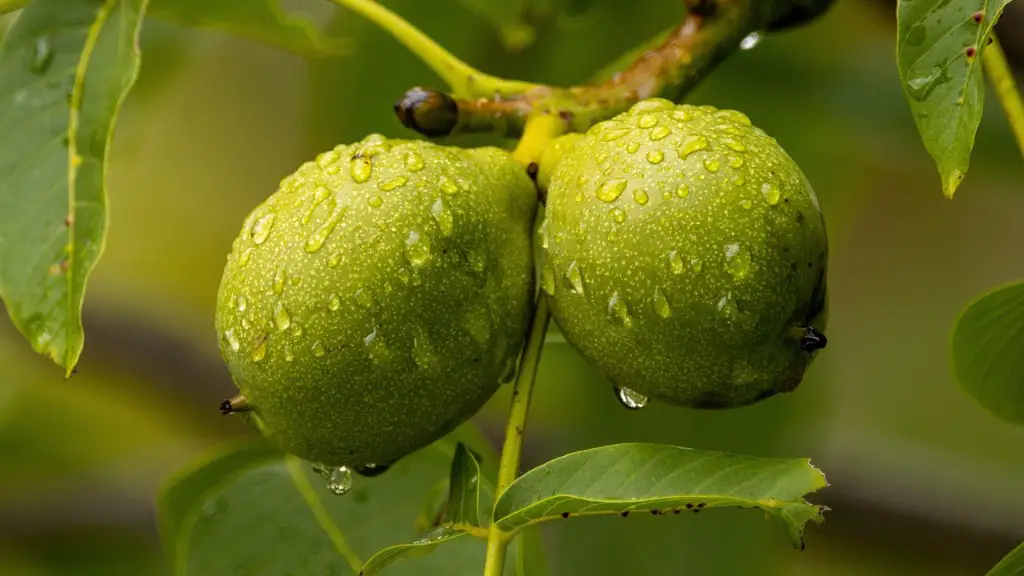Lemons are a tart, refreshing, and delicious addition to any kitchen. Growing a lemon tree in Colorado is a challenge, but not impossible. With the right knowledge and supplies, you can have a thriving lemon tree in no time. Here are the steps to get you started:
1) Select a suitable container: You need to choose a pot that is large enough for a lemon tree. The container should measure 18 to 20 inches in diameter and be made of a material that allows for water drainage. It’s important to also choose a pot that has a matching saucer to catch any excess water.
2) Pick the right soil mix: The soil you choose should be light enough for the roots of the tree to expand and breathe. You should also add mulch to the soil to help retain moisture. Planting mix or potting soil is ideal for growing a lemon tree in Colorado.
3) Dig a hole: Before planting the tree, you’ll need to dig a hole that is twice the size of the pot and at least 6 inches deep. Fill the hole with a soil mix of two parts soil to one part manure.
4) Plant the tree: Place the tree in the hole and cover it with a soil mixture. Make sure the tree is properly secured and watered regularly.
5) Choose the best location: Lemon trees do well in a full sun location that gets at least 6 hours of direct sunlight each day. The tree should also be placed away from strong winds to protect it from damage.
6) Feed the tree regularly: You’ll need to feed the lemon tree with a balanced fertilizer every month. The fertilizer should contain nitrogen, phosphorus, and potassium.
7) Prune the tree: Pruning is important for a healthy lemon tree. Once the tree starts to bloom, you should prune back any branches or stems that are overgrowing. This will help to promote air circulation and encourage new growth.
Water and Temperature
Water is key to keeping your lemon tree alive. You should water it regularly, especially during dry months. To determine when and how much water to give it, stick your finger in the soil and see how wet it is. When the soil is dry within a few inches, it’s time to water the tree. In addition, the soil should be sprayed down evenly and frequently.
The temperature in Colorado can fluctuate greatly throughout the year. During the winter, your lemon tree should be kept indoors and in a spot that is warm and sunny. During the summer months, the tree should get plenty of direct sunlight and should be brought indoors when temperatures dip too low.
If your lemon tree is consistently getting too cold or too hot, it can become stressed and begin to lose its leaves. To avoid this, keep it in an area that is consistently cool, but not freezing.
Make sure the area around the tree is kept clean and free of debris. Too much dirt and debris can cause the tree to become infested with pests and diseases. Additionally, be sure to keep an eye out for any signs of distress, such as yellowing of leaves, wilting, or pests.
Taking the time to properly care for your lemon tree will ensure it survives and thrives in Colorado.
Pots and Containers
Choose a pot or container large enough to accommodate the size of your lemon tree. A pot that is 18 to 20 inches in diameter is generally large enough. Make sure the container has a matching saucer to catch any excess water.
The material of the pot is important too. Choose a material that will allow for proper drainage, such as terracotta or ceramic. If the container doesn’t allow for proper drainage, the tree may become susceptible to root rot.
Plastic containers are not recommended, as they make it difficult for the roots of the lemon tree to expand. Furthermore, plastic may react with certain fertilizers or chemicals and can cause a reaction.
Finally, if you intend to move the lemon tree to a different location, choose a lightweight container with wheels or handles for easy transportation.
Harvest
Harvesting your lemon tree is a rewarding experience. The fruits of your labor are finally ready to be enjoyed. When the lemon tree blooms and produces fruit, it will be time to pick.
The best time to harvest a lime is when it has a golden hue. You can squeeze the fruit to determine if it is ready to be picked. Once you have picked the fruit, use them immediately or store them in the refrigerator.
The lemon tree will produce fruit for up to eight months, so be sure to keep checking for ripe fruit. Overripe fruit will fall off the tree, and the tree will no longer produce new lemons.
Pest and Disease Control
A healthy lemon tree is one that is protected from pests and diseases. To protect your tree, use an organic pesticide or fungicide to keep it free of bugs and diseases.
Be sure to inspect the tree regularly for signs of distress such as wilting or yellowing leaves. If you spot any signs of distress, act quickly to ensure the health of your lemon tree.
In addition, make sure the area around your lemon tree is kept clean. Excess dirt and debris can attract pests and diseases.
Finally, if your lemon tree is consistently getting too cold or too hot, it can become stressed and begin to lose its leaves. To avoid this, make sure it is placed in an area that is consistently cool, but not freezing.
Container Maintenance
Taking care of your lemon tree’s container is essential for its health. Be sure to inspect it regularly, checking for any cracks or tears that may allow water and soil to escape.
In addition, if the container begins to look worn or if the container is starting to deteriorate, it’s time to replace it. If the container is not replaced, it can cause damage to the tree and its root system.
Also, be sure to change out the potting soil or planting mix every year. This will ensure that the soil is loose and contains the right amount of nutrients and minerals for the tree.
Make sure the container is also strong enough to handle the weight of the tree. If it is not strong enough, it could cause the container to become unstable which could eventually lead to the tree toppling over.
Overall, following these tips can help to keep your lemon tree healthy and thriving in Colorado.



